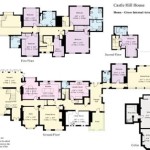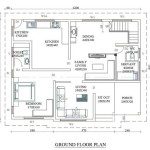Building Plans for My Home: Essential Aspects
Creating building plans for your home is a crucial step in the construction process, ensuring a safe, efficient, and aesthetically pleasing outcome. To embark on this exciting journey, understanding the key aspects of home building plans is essential. Here's a comprehensive guide to help you navigate the world of architectural design.
1. Site Analysis and Zoning Regulations
Before embarking on the design process, conduct a thorough site analysis to assess the topography, soil conditions, sun exposure, and surrounding environment. This information will inform the placement and orientation of your home to maximize natural light, minimize energy consumption, and comply with local zoning regulations.
2. Floor Plan Design:
The floor plan establishes the layout and flow of your home. Consider the number of bedrooms, bathrooms, living spaces, and storage areas you need. Plan for a balance of privacy and shared spaces, ensuring easy access between key areas. Think about how you will use each space to create a functional and comfortable living environment.
3. Structural Design:
The structural design ensures the stability and integrity of your home. It involves determining the appropriate foundation type, framing materials (wood, steel, concrete), and roof structure. These decisions impact the overall strength, durability, and lifespan of your dwelling.
4. Electrical and Plumbing Systems:
Electrical and plumbing systems are essential for a comfortable and functional home. Electrical plans show the placement of outlets, switches, and lighting fixtures. Plumbing plans indicate the location of pipes, fixtures, and drainage systems. Careful planning is necessary to ensure adequate electrical capacity and efficient water supply.
5. Building Materials Selection:
Choosing the right building materials is crucial for both aesthetics and longevity. Consider factors such as durability, energy efficiency, cost, and maintenance requirements. Explore options like brick, stone, siding, and roofing materials to create a home that aligns with your vision and lifestyle.
6. Energy Efficiency and Sustainability:
In today's environmentally conscious climate, designing an energy-efficient home is paramount. Incorporate energy-saving features such as insulation, double-paned windows, and solar panels to reduce energy consumption and create a sustainable living space.
7. Architectural Style and Aesthetics:
The architectural style of your home reflects your personal preferences and desired ambiance. Explore various styles, from traditional to contemporary, modern to rustic. Consider how the exterior design complements the surroundings and creates a cohesive look that enhances your property's value.
8. Cost Estimation and Budgeting:
Accurately estimating the cost of construction is essential for financial planning. Work with professionals to develop a detailed budget that outlines the expenses associated with materials, labor, permits, and contingencies. This will help you make informed decisions and avoid unexpected costs.
9. Legal Considerations and Permits:
Building plans must adhere to local building codes and zoning laws. Obtain the necessary permits and inspections to ensure compliance and protect against legal issues. Consult with architects, engineers, and local authorities to navigate the regulatory process.
10. Collaboration and Communication:
Building a home is a collaborative effort. Effective communication between architects, engineers, contractors, and homeowners is crucial. Clearly define expectations, establish roles and responsibilities, and foster open dialogue to ensure a smooth and successful construction process.
Conclusion
Creating building plans for your home is an exciting endeavor that requires careful planning and attention to detail. By considering the essential aspects outlined above, you can design a home that meets your functional needs, reflects your personal style, and stands the test of time. Remember, this guide provides an overview, and it's always advisable to consult with professionals to ensure a safe, efficient, and dream-worthy home.

House Plans How To Design Your Home Plan

House Plans How To Design Your Home Plan

House Plans How To Design Your Home Plan

House Plans How To Design Your Home Plan

House Plans How To Design Your Home Plan

3d Floor Plans

Floor Plans Types Symbols Examples

Where You Can Buy House Plans Live Home 3d

Est House Plans To Build Simple With Style Blog Eplans Com

Floor Plans Learn How To Design And Plan








